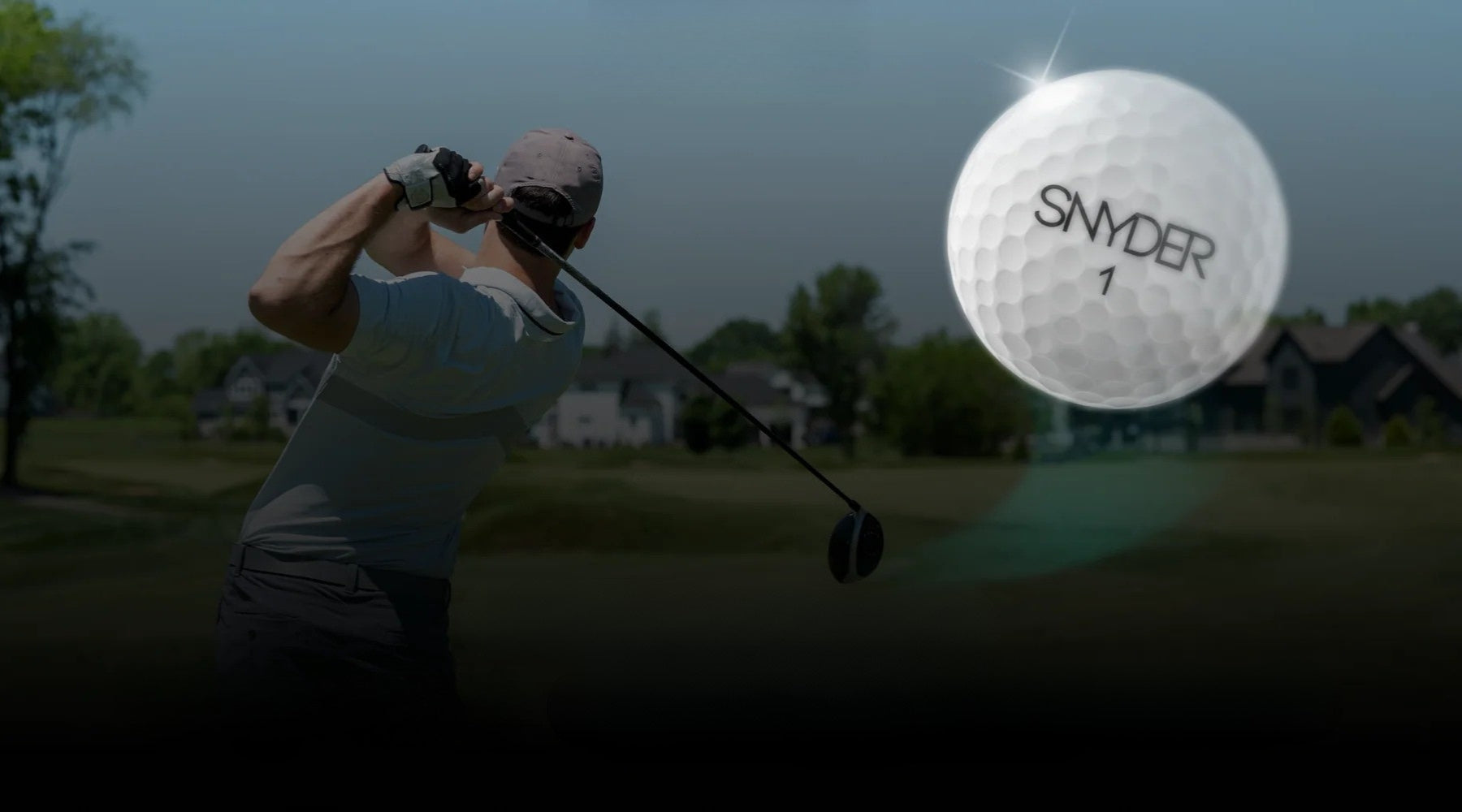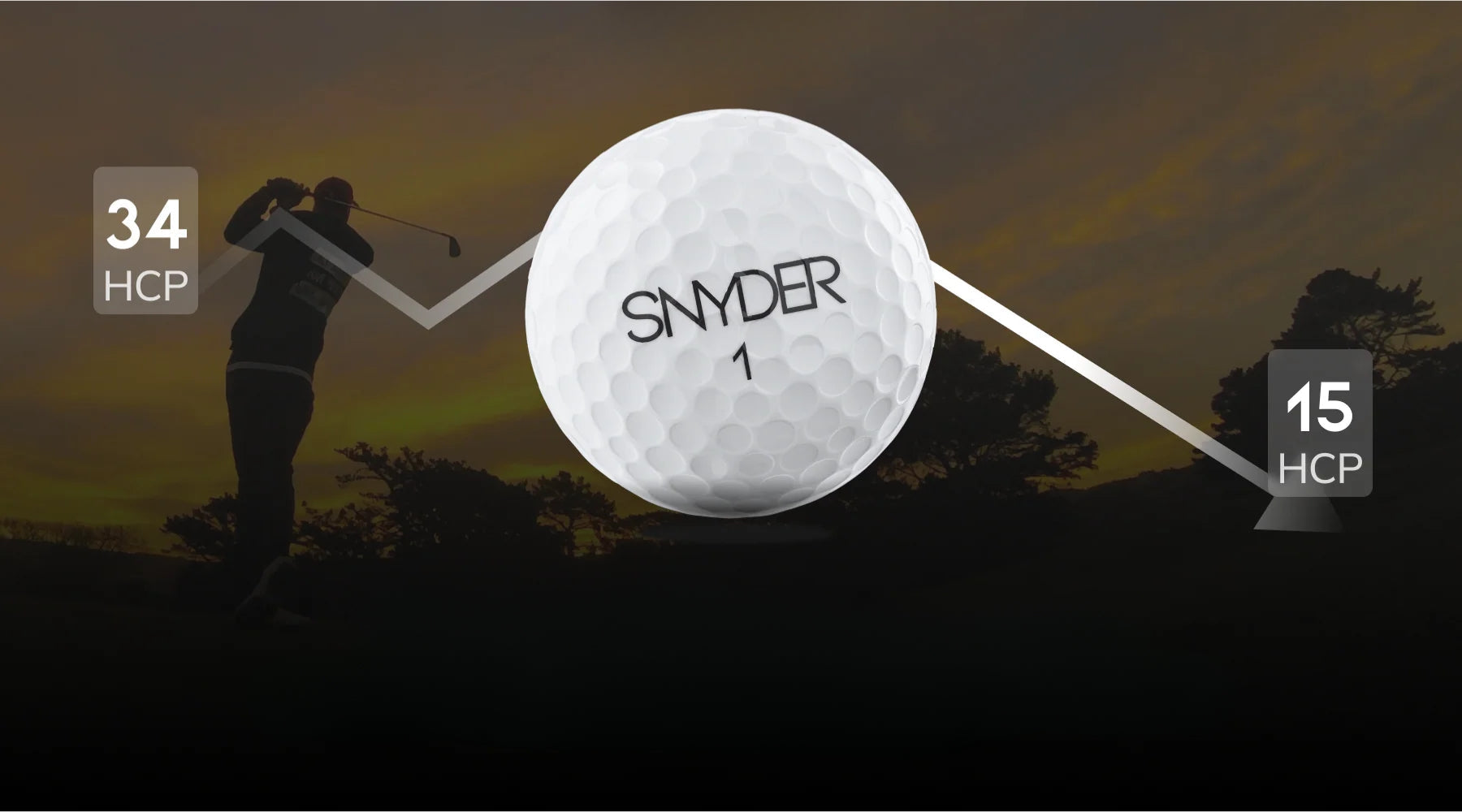If you're serious about improving your golf game, understanding how to measure golf swing speed is a must. Swing speed affects everything from how far you hit the ball to what type of driver, shaft, or golf ball you should be using. Whether you’re a beginner looking for a starting point or a mid-handicapper hoping to increase distance off the tee, tracking your swing speed gives you the data you need to practice smarter, not just harder.
In this guide, we’ll break down the best ways to measure your swing speed, from high-end launch monitors to budget-friendly radars and mobile apps. You'll also learn how to interpret your numbers, compare them to player averages, and take action to improve. Let’s get into it.
Understanding Golf Swing Speed

Golf swing speed refers to how fast the clubhead is moving at the moment it strikes the ball. Measured in miles per hour (mph), this metric plays a key role in determining how far and how accurately you can hit each shot.
Why Swing Speed Matters
The faster your swing speed, the more potential energy you transfer to the ball, leading to longer drives and greater overall distance. However, speed without control can cause issues with accuracy and ball flight. That’s why understanding your swing speed is essential not just for performance, but also for selecting the right equipment, such as shaft flex, driver loft, and golf ball compression.
In short: Swing speed is the foundation of power, distance, and equipment fit. Whether you're a beginner or a mid-handicapper, knowing your numbers helps you play smarter and choose gear that complements your game.
Methods to Measure Golf Swing Speed

There are several effective ways to measure your golf swing speed, ranging from high-end launch monitors to simple, affordable radars and even apps. Below are the most common methods used by golfers of all levels.
1. Launch Monitors
Launch monitors like TrackMan, FlightScope, and GCQuad are some of the most accurate tools for measuring swing speed. These professional-grade devices use radar or high-speed cameras to capture detailed data, including clubhead speed, ball speed, launch angle, spin rate, and more.
Pros:
- Extremely accurate and detailed
- Tracks both club and ball data
- Useful for fittings and coaching
Cons:
- Expensive (often thousands of dollars)
- Requires space and sometimes professional setup
Launch monitors are ideal if you want deep insight into your swing and are serious about long-term improvement. Many teaching pros and club fitters use them during lessons or fittings.
2. Swing Speed Radars
If you're looking for a more affordable and portable option, swing speed radar devices like the PRGR Launch Monitor or Swing Speed Radar are excellent choices. These compact tools are easy to set up and give you real-time feedback on your swing speed without needing to hit a ball.
Pros:
- Budget-friendly
- Lightweight and portable
- Great for tracking progress during practice
Cons:
- Doesn’t provide full launch data
- Accuracy can vary depending on setup and environment
For amateur golfers and weekend players, swing speed radars are a practical and effective solution to track clubhead speed and monitor progress over time.
3. Smartphone Apps
There are now mobile apps that claim to measure swing speed using your phone’s sensors or camera. Apps like Swing Speed Analyzer and Hudl Technique allow you to record your swing and receive estimates of your swing speed, often based on motion tracking or video playback.
Pros:
- Extremely convenient
- Most are free or low-cost
- Useful for swing analysis and video review
Cons:
- Accuracy is inconsistent
- Not all apps offer true speed measurement
- Results vary depending on phone model and environment
While not a replacement for a radar or launch monitor, swing speed apps can give casual golfers a rough idea of their swing mechanics and speed.
4. Estimating via Distance
Another common method for estimating swing speed, especially if you don’t have access to technology, is to use your average carry distance and divide it by 2.3. This gives a rough approximation of your swing speed with a driver.
Formula:
Estimated Swing Speed (mph) = Carry Distance (yards) ÷ 2.3
Example:
If you consistently carry your driver 230 yards:
230 ÷ 2.3 = 100 mph swing speed
Accuracy Note: This method assumes optimal launch conditions and center-face contact. Real-world factors like wind, spin rate, and ball quality can affect distance, so treat this estimate as a rough guideline, not a precise reading.
Average Swing Speeds by Golfer Profile

Knowing how your swing speed compares to others can help you set realistic goals and make smarter decisions about your training and equipment. Below are average swing speeds by age, gender, and skill level, based on available data from coaches and launch monitor studies.
Average Swing Speed by Golfer Type
|
Golfer Type |
Average Driver Swing Speed |
|
PGA Tour Professional |
113–118 mph |
|
LPGA Tour Professional |
94–98 mph |
|
Low-Handicap Amateur Men |
100–105 mph |
|
Mid-Handicap Amateur Men |
90–97 mph |
|
High-Handicap Men |
80–89 mph |
|
Amateur Women |
65–80 mph |
|
Senior Men |
75–85 mph |
These figures give a general sense of where your swing speed should fall based on your profile. If you're swinging below average for your category, don’t worry, speed can be improved with focused training and technique refinement.
Why It Matters
Your swing speed affects everything from club selection to ball choice. For example:
- Slower swingers may benefit from lightweight shafts and low-compression balls.
- Faster swingers might need stiffer shafts and higher-compression balls for better control.
Tip: Use your swing speed as a benchmark, not a judgment. Knowing where you stand helps guide your path forward.
Tips to Improve Your Swing Speed

If you want to add distance to your drives or generate more power with irons, improving swing speed is key. The good news is you don’t need to swing harder, you need to swing smarter and more efficiently.
Strength and Flexibility Training
Your body is the engine behind your swing. Focusing on core strength, mobility, and rotational power can unlock more speed without overexertion. Exercises like kettlebell swings, resistance band rotations, and dynamic stretching routines help generate clubhead speed through athletic movement, not just effort.
Pro Tip: Add a golf-specific workout 2–3 times per week to support long-term gains.
Swing Mechanics and Technique Adjustments
Often, it’s not about strength, it’s about sequencing. Many golfers generate more swing speed by refining their timing, weight transfer, and follow-through. Work with a coach or use swing analysis tools to break down your swing and identify mechanical bottlenecks.
Key Adjustments to Try:
- Relax your grip and stay loose through the takeaway.
- Focus on using your lower body for power.
- Avoid overswinging, speed comes from rotation, not tension.
Use of Weighted Clubs and Resistance Bands
Training with overspeed tools like the SuperSpeed Golf sticks or resistance bands can help increase your swing speed through neuromuscular adaptation. These tools help retrain your body to move faster and more explosively without sacrificing balance.
Start Slow: Begin with lighter weights, then gradually add resistance. Always warm up properly to prevent injury.
Consistency and Practice Routines
Speed training only works if it’s consistent. Integrate swing speed drills into your weekly routine, and track your numbers using a swing speed radar or launch monitor. You don’t need to train daily, but even 15 minutes of focused practice a few times per week can yield great results.
Suggested Routine:
- 2 sessions per week using a weighted club or speed stick
- 1 session reviewing video or using a swing analysis app
- 1–2 days of strength/mobility training
Choose the Right Gear for Your Swing Speed
Your equipment can either support your swing speed, or work against it. Choosing the right golf ball and club setup ensures you're maximizing distance, launch, and control.
For example:
- Golfers with slower swing speeds typically benefit from low-compression balls that launch higher and compress more easily off the face.
- Faster swingers may prefer higher-compression balls that reduce spin and enhance control.
Driver shaft flex and weight also impact how efficiently your swing translates into speed and ball flight.
Tip: If you're unsure what to use, check out SNYDER’s golf balls review, designed to match a range of swing speeds and deliver more consistency off the tee.
Unlock Your Potential with Smarter Swing Speed Insights
Learning how to measure golf swing speed is more than just collecting numbers, it’s about understanding how your swing works and using that knowledge to drive real improvement. Whether you're chasing more distance, choosing the right gear, or working toward a lower handicap, knowing your swing speed gives you a performance edge.
From launch monitors to radar devices and smart training techniques, measuring and improving swing speed is one of the most impactful ways to play better golf, at any level.
Ready to put that speed to work? Explore SNYDER golf balls designed to match your swing and help you gain the control, distance, and feel you need. Then head over to our SNYDER blog for more expert-backed tips, gear guides, and performance insights to help you play your best, one swing at a time.





Share:
How Long to Get Good at Golf: A Realistic Timeline for Beginners